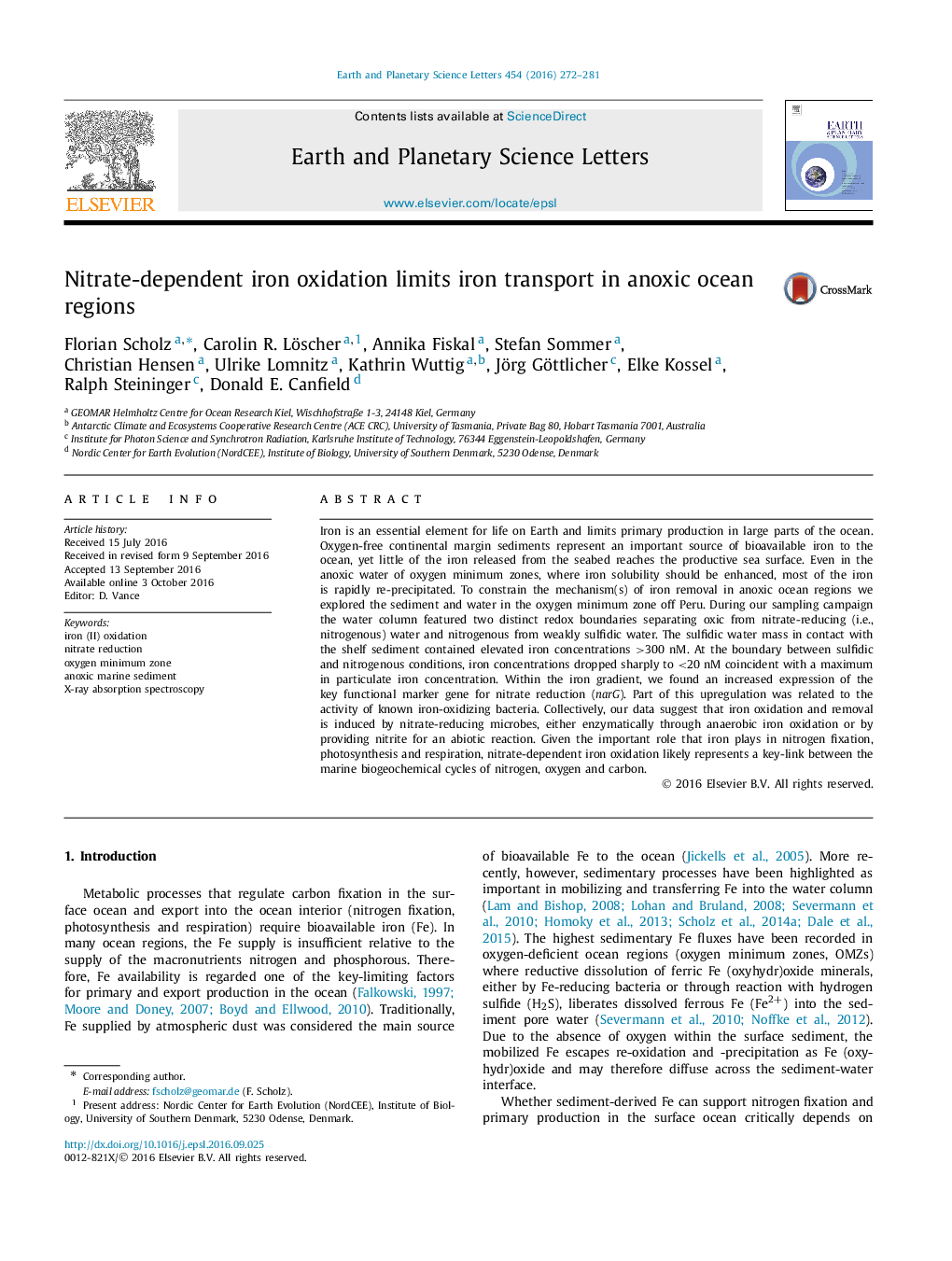| Article ID | Journal | Published Year | Pages | File Type |
|---|---|---|---|---|
| 6427202 | Earth and Planetary Science Letters | 2016 | 10 Pages |
•Sediments in Peru oxygen minimum zone release iron and sulfide into water column.•Iron is removed at boundary between sulfidic and nitrogenous water column.•Geochemical and metagenomic data indicate nitrate-dependent iron oxidation.•Nitrate-dependent iron oxidation links marine nitrogen, oxygen and carbon cycles.
Iron is an essential element for life on Earth and limits primary production in large parts of the ocean. Oxygen-free continental margin sediments represent an important source of bioavailable iron to the ocean, yet little of the iron released from the seabed reaches the productive sea surface. Even in the anoxic water of oxygen minimum zones, where iron solubility should be enhanced, most of the iron is rapidly re-precipitated. To constrain the mechanism(s) of iron removal in anoxic ocean regions we explored the sediment and water in the oxygen minimum zone off Peru. During our sampling campaign the water column featured two distinct redox boundaries separating oxic from nitrate-reducing (i.e., nitrogenous) water and nitrogenous from weakly sulfidic water. The sulfidic water mass in contact with the shelf sediment contained elevated iron concentrations >300 nM. At the boundary between sulfidic and nitrogenous conditions, iron concentrations dropped sharply to <20 nM coincident with a maximum in particulate iron concentration. Within the iron gradient, we found an increased expression of the key functional marker gene for nitrate reduction (narG). Part of this upregulation was related to the activity of known iron-oxidizing bacteria. Collectively, our data suggest that iron oxidation and removal is induced by nitrate-reducing microbes, either enzymatically through anaerobic iron oxidation or by providing nitrite for an abiotic reaction. Given the important role that iron plays in nitrogen fixation, photosynthesis and respiration, nitrate-dependent iron oxidation likely represents a key-link between the marine biogeochemical cycles of nitrogen, oxygen and carbon.
